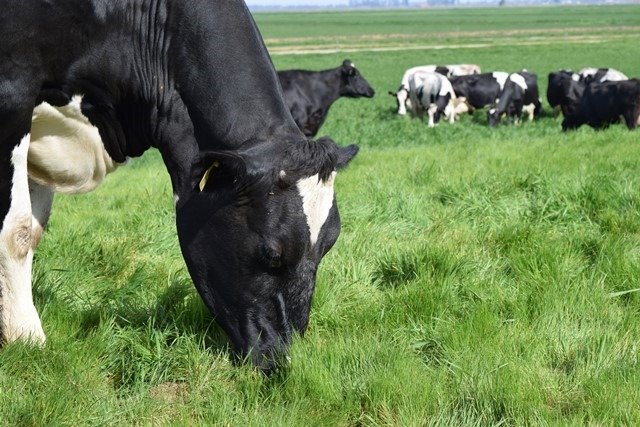
Did you know that the average dairy cow can eat over 100 lbs. of feed per day.
Many of the older cows will even eat around 120 lbs. per day when they are at peak milk production. That means each cow is can eat about 18 tons of feed per year. Dairy cows are like athletes and do a great job converting feed into the energy they need for maintenance and milk production.
The main factor in how much a cow will eat depends on her milk production. A cow that is milking will eat more feed than a cow that is not milking.
Feed consumption comparison between a milking cow and a dry cow
The amount of feed that cows eat will follow milk production very closely. There is a direct correlation in cows between milk production and feed consumption.
The amount of feed a cow eats follows milk production
There are a variety of factors that can influence how much a cow will eat:
- Genetics – The breed of the cow will largely determine how much feed is eaten; dairy cows eat more than beef cow breeds because they are converting that feed to milk. Beef cows convert feed to body fat and so eat less. Holstein cows are a bit bigger than the Jersey cows so the Holsteins need a bit more feed for body maintenance.
- Milk Production – The amount of milk a cow is producing is the largest factor affecting how much feed a cow eats. If a cow is producing high amount of milk, she needs more food. There is a direct correlation between how much a how eats and how much she will produce.
- Health Condition – A Sick cow will eat less than healthy cows. Just like when people get sick, cows will eat less when they’re not feeling well.
- Reproductive status – Being pregnant will mean that a cow needs to eat more feed. It’s often not noticed because cows that are pregnant begin to drop in milk production so the amount of feed needed for milk production is reduced over time even though a pregnant cow will need more energy for the baby.
- Age – Younger cows eat less than older cows. Even though younger cows put more energy towards growth. Older cows put more energy towards milk production because they no longer need that energy to grow.
- Temperature/ Weather – Weather is a big factor on a cows diet. If it is too cold, cows will eat more so they can sustain normal body function – more feed will be used for maintenance to keep warm. In the summer, heat stress can reduce a cow’s appetite.
- Feed Consistency – Believe it or not, the consistency of the feed can also affect a cow’s eating habits. Cows are creatures of habit and any significant changes to their food (like changing types of grass or forages) will cause them to eat less. They like eating the same things each day.
Keeping it Balanced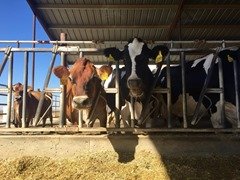
To make sure cows get proper nutrition, we have a nutritionist balance the cow’s meal specifically for her needs. The nutritionist balances all the macronutrients and micronutrients to make sure the cow gets all the nutrition it needs for proper health. Carbohydrates, fat, protein, vitamins, minerals, ect. The nutritionist even gets into the micronutrients, making sure they get all the essential amino acids and in the proper balance. Gym bros be jealous.
The majority of the cow’s diet is grass, but some grains are used to balance the amount of protein and energy. Cows need to eat a balanced meal.
A variety of factors can affect the nutritional content of feeds so they are checked so the cows ration can be balanced accurately. Every type of feed (alfalfa hay, corn silage, oats, rye grass, sorghum grass, ect.) is analyzed to check the nutrient content that is available for the cows. The hay grown early in the summer has a different nutrient content than hay grown late in the season.
Some of the different nutrients that are analyzed in cows feed
Is feeding cows a “waste” of food
Feeding cows is not wasteful because cows are bio-converters of low quality feeds. Cows take low quality foods that humans cannot digest and convert them to highly nutritious and absorbable forms.
Cows convert fiber to milk
Grass and other forages cannot be eaten efficiently by people. If these grasses are eaten by people, they provide very little nutrition – mostly because they are so high in fiber. Because of the way the cow’s stomach is designed, the cows can take fiber and convert it to milk – which is rich in protein, fat, sugar, vitamins, minerals, and other bioactive compounds. A much higher quality food.
Dairy Cows and Feed Efficiency
Interestingly, today’s dairy cow is more feed efficient than cows in the past. Many dairies today are focused on breeding cows for better feed converting abilities
Cows today are more feed efficient and have a lower environmental hoofprint

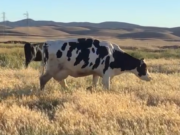
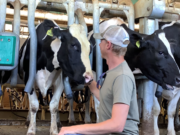
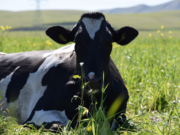
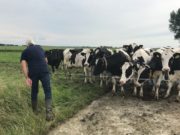
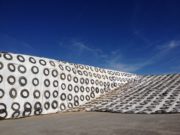
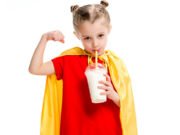
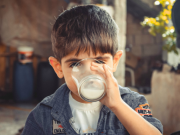
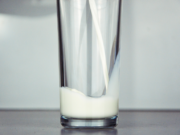
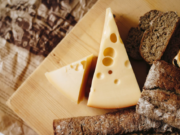
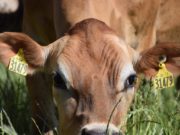
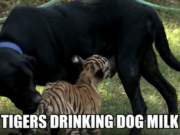
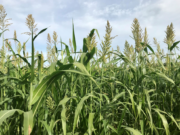
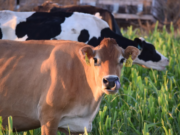
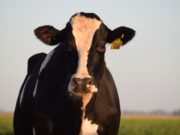
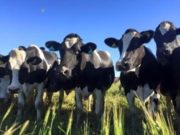
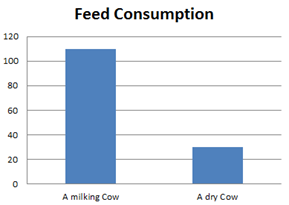
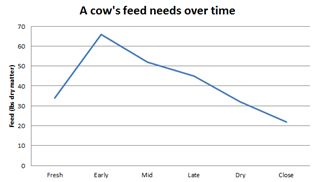
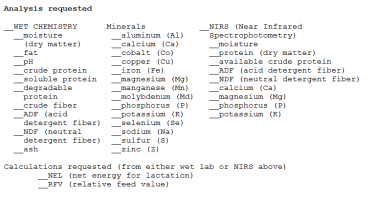
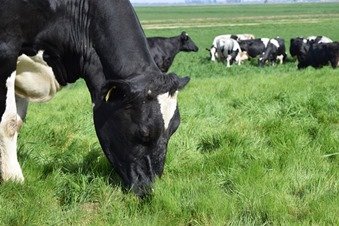
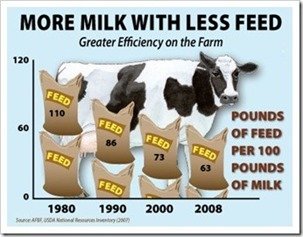
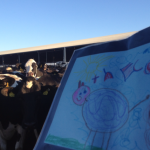
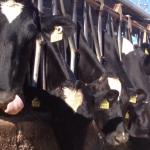
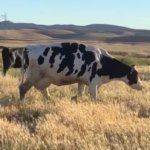
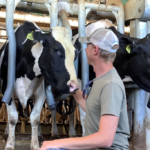
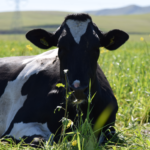
Do you ever have problems with any cattle (cows, steers, etc.) butting their heads on water tanks/feeders? If so, how did you keep them from doing it, or did you not care?
We have a few jersey steers, and they tear up water tanks, feeders, and anything else they can put their heads against. If you have any tricks to keep them from doing that, I sure would like to know. thx
Yeah – the Jerseys are usually the culprits. The only thing you can really do is built your troughs and feeders to be sturdy enough to take the abuse. Our troughs are concrete so they don’t break. We had to weld a cage for the float valve to keep them from breaking it. There’s not much else you can do i think to discourage them. They love to play, even if it includes butting, rubbing, and sucking on everything
Later in the day after I asked you that question, I put an old tire in their pasture. they went wild with it, and I haven’t found any more damage.
Oh, that is good thinking- they just wanted toys lol!
i love this blog 🙂 🙂
Thank you, I love that you love it
I seriously need to know how much dairy meal I have to feed my dairy cows to achieve maximum yields. I am not happy with the current performance of about 5kg milk just 3 months after calving. I need alot of advise before I give up. I am currently zero grazing and feeding about 2kg to 3kg dairy meal per day.
The rest is properly done becuse we provide silage from maize baby corns and some green fodder.
Well it depends on the cows stage of lactation- if she is further along in her milking lactation she will keep declining in production. A cow that just had a calf until 150 days or so is the most productive. The ration you formulate to best suit her needs. We have a nutritionist balance all the macros and micro nutrients. Generally the ration is 70% silage and 30% grains and other feeds to balance the ration (protein and energy). So not just grain corn, you need to feed a protein source too. Hope this helps
I don’t know if this question is relevant to the article or not, but are cows fed before or after they are milked?
They’re fed fresh feed in the morning but they have access to feed all day long. They eat the most right after milking